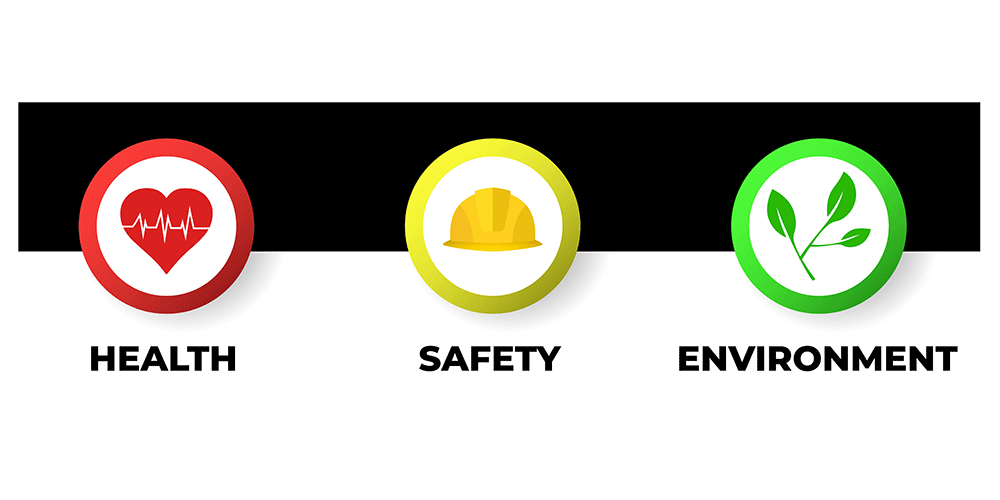College and university Environmental Health and Safety (EH&S) professionals have a wide range of responsibilities in ensuring the safety and compliance of campus operations.
Managing EH&S is difficult, especially at institutions that have substantial research operations, multiple campuses, or a large geographic footprint. Campuses may only have a small number of professionals accountable for overseeing all EH&S programs, protocols, and compliance activities across these complex environments. With endless tasks to manage, EH&S offices are typically over-committed and under-resourced.
EH&S Offices are Chronically Under-Resourced
With core missions of teaching and research driving the budgets of most colleges and universities, EH&S is often viewed as a cost center, making it less of a funding priority for institutional leadership. EH&S offices without a modern technology platform often have difficulty demonstrating their efficacy and workload, which contributes to these funding challenges.
It can also be very difficult for campuses to find qualified individuals to fill vacant EH&S positions. Experienced EH&S professionals are always in high demand, and certain positions may require an advanced degree or knowledge across a wide array of disciplines, including occupational, chemical, fire & life, radiological, and biological safety. In addition, new EH&S professionals may struggle to get up to speed on all of the unique, inter-departmental relationships, risks, and safety issues that they may encounter when starting in their new role.
Lastly, EH&S is typically only resourced to be accountable for and not necessarily responsible for performing every inspection and compliance activity on campus. Collaboration with everyone in the campus safety community is critical to ensuring compliance and improving safety outcomes, however, EH&S professionals often find it difficult to create this culture of accountability using a combination of spreadsheets, share drives, tribal knowledge, and systems designed for other industries.
Using Technology to Enhance EH&S Efficiency and Effectiveness
An EH&S technology platform can help transform campus safety and compliance efforts in a number of different ways, including:
1. Centralized Data Management
By providing a centralized hub for your campus safety community to update, manage, store, and analyze data pertaining to inspections, safety issues, incident tracking, emergency plans, permits, safety assets, hazardous waste, and incidents, EH&S professionals can provide everyone access to the data they need. At the same time, they can more easily monitor risks, activities, and key safety outcomes.
In addition, an EH&S technology platform offers new members of your campus safety community a faster ramp to understanding key areas of risk, assigned tasks, and historic issues they may encounter in their new role.
2. Automated Notifications
Technology can help EH&S professionals automatically update members of the campus safety community regarding critical tasks that need to be completed, including inspections, issue remediation, chemical inventory, and permit approvals. This often alleviates the need for EH&S to directly manage thousands of individual email threads relating to these activities.
3. Mobile Access
Mobile access can be an invaluable efficiency multiplier for EH&S professionals who are rarely at their desks. A modern, mobile EH&S platform allows users to update chemical inventory, view building safety systems, access safety asset documentation, log safety issues, and review prior inspection history while they are on the move, allowing them to do more without returning to their desktop to reference paper documents, spreadsheets, and share drives.
4. Comprehensive Reporting
Access to comprehensive reporting on inspections, incidents, and issue remediation allows EH&S professionals to spot key trend data that can help impact safety outcomes. It can also help demonstrate EH&S workloads and effectiveness, information that is often required by senior leadership to support more spending on safety and compliance activities.
Embrace Technology as a Key EH&S Resource
It takes a village to create a culture of safety, and EH&S professionals should welcome the contribution that technology can offer in enhancing cross-functional collaboration. By relying on technology as a key resource, EH&S professionals can improve compliance and enhance safety culture while simultaneously saving valuable time and staff resources.
Joe Price is CEO and co-founder of CampusOptics, a cross-functional EH&S platform designed specifically for institutions of higher education. CampusOptics was created to help campus safety professionals improve collaboration, reduce institutional risk, and enhance safety culture.
The views expressed by guest bloggers and contributors are those of the authors and do not necessarily represent the views of, and should not be attributed to, Campus Safety.













